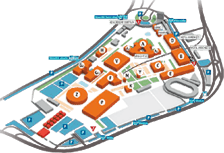TECHAGRO
7.-11.4. 2024
International Fair of Agricultural Machinery

Agriculture, forestry and hunting in other Central European countries
Agriculture represents an important part of national economy in Slovakia. About 100,000 people work in this sector. Farmland occupies approximately 20,000 square kilometres. The most frequently grown crops are wheat, barley and maize. There are over 450 thousand pieces of beef cattle in Slovakia.
Forests make up for approximately 40% of the area of Slovakia, with a slight increase in the percentage every year. Deciduous forests prevail with 60%, the most widespread species being beech. State-owned forests are less than one half in Slovakia. The annual logging exceeds 9.5 million cubic meters.
In Slovakia, there are almost two thousand hunting reserves with a total area of more than four million hectares. You can meet 55,000 hunters in them. Most hunted are pheasants, wild boars and deer.
Poland is characterized by a high share of agricultural land, which occupies 15.5 million hectares, or almost one half of the country’s surface. Soil quality is lower than the European average, as there is a high proportion of poor and acidic soils. The most important crop is wheat, followed by barley and triticale, which is a crossbreed of rye and wheat. Over 5.7 million pieces of livestock are bread in Poland.
Forests in Poland occupy 300 million hectares, with conifer forests prevailing. Forest pine is the prevailing species. Over 80% of forest areas are owned by the state.
In Poland, there are over 100 thousand hunters and their most frequent trophies are wild boars, roe deer and foxes. Hunting areas occupy more than 300 thousand square kilometres.
Germany uses 52.4% of its total area for agriculture, precisely over 187 thousand square kilometres. Germany is one of the most important producers of milk, pork and potatoes in the European Union. But, of course, cereals and forage crops are grown here as well.
Forests in Germany cover 32% of the land, occupying thus 11.4 million hectares. About one half of them are privately owned. The most abundant in the German forests with more than 26% is spruce, which is followed by almost 23% of the pine.
In Germany, over 350,000 hunters are registered, most often hunting for roe deer, wild boars or foxes. The area of hunting reserves occupies more than 350 thousand square kilometres.
Austria uses over 2.7 million hectares of land for agriculture, producing mainly grains, potatoes, fruits and vegetables. Austria is also a major producer of milk and eggs. In livestock breeding, the Austrians focus on cattle, sheep and goats.
Forests spread over roughly 4 million hectares, with most of this area being privately owned. Timber logging amounts to 18 million cubic meters per year. 70% of the forests are coniferous and 60% of the trees are spruce.
Hunting reserves in Austria are spread over 84,000 square kilometres, with 118 thousand active hunters. The most popular catches are roe deer, hares and foxes.



